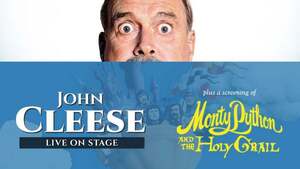
Messiah of Evil
directed by Willard Huyck & Gloria Katz
starring Marianna Hill, Joy Bang, Anitra Ford, Royal Dano, Elisha Cook Jr.
Radiance Films
An artsy horror film abandoned during production, later picked up and recut with a new prologue and epilogue, then released under half-a-dozen different titles for the rest of the decade hardly seems like a horror classic in the making, but Messiah of Evil has persevered and continues to find an audience, largely because of its inherent weirdness.
The film was made by Willard Huyck & Gloria Katz during a hiatus from working on the script for George Lucas’s American Graffiti, when the duo got the opportunity to make a horror movie. They had little background or interest in horror, but they were highly influenced by European art cinema, and that influence is what makes the film so unique. The film’s backer didn’t actually have the money that was promised, and when the funds ran out, Huyck and Katz went back to Lucasfilm, leaving the fate of their feature in the hands of others. Additions and editing on the film saved some version, albeit incomplete, of the directors’ vision and made the film even more surreal.

Arletty (Marianna Hill) arrives in Point Dume, California, to reunite with her estranged father. She finds his house empty and the residents of the town, including her father’s blind art dealer, to be increasingly odd. She soon meets up with folklorist Thom (Michael Greer) and his two girlfriends, Toni (Joy Bang) and Laura (Anitra Ford). The four of them try to unravel what has happened to Arietty’s father and uncover the secret of Point Dume. Plot and narrative drive are not a priority for the first-time feature directors, so most of the movie functions in dream logic with seemingly unconnected scenes working together in the strange town of Pointe Dume.
Let’s be honest, most horror movies really boil down to a couple of set pieces that we actually love and remember and the rest just exist to set up the big scenes. Willard Huyck & Gloria Katz’s surreal and melancholy debut is memorable for two scenes, but they are both classics of unnerving terror. The grocery store scene and the movie theater scene both turned the most friendly and familiar places into nightmares years before George Romero’s shopping-mall zombie epic Dawn of the Dead. When Laura (Anitra Ford) goes to Ralph’s Supermarket one night, she should have been alerted that something wasn’t right as she traversed the barren parking lot in front of the brightly-lit grocery store. She finds the store eerily empty until she discovers the zombified town fathers, still wearing their suits and ties, devouring the raw meat from the butcher’s counter. They give chase and overtake and devour Laura, as a montage of cuts between the empty aisles of the store and the middle-aged zombies consuming the young outsider. I’m using the term zombie, but these are not the rotting corpses of Romero and Fulci, they are closer to the pod people in Invasion of the Body Snatchers, as they are alive, but dead inside. They have no feelings left, emotional nor physical, due to the evil that is draining life from Pointe Dume.
In the other signature fear tableau, Toni heads to the local cinema. As Toni enters the theater, the marque emblazoned with the title Kiss Tomorrow Goodbye ( an actual 1950 James Cagney movie) ominously goes dark. Settled in her seat with a box of popcorn (in a setup that looks suspiciously like the setup for the Sharon Tate movie sequence in Once Upon a Time in Hollywood), Toni relaxes in an empty theater while watching the Sammy Davis Jr. western Gone With the West. As she watches, the town’s citizens slowly, silently enter and fill the seats behind her. This simple setup is a masterwork in suspense, because now we know the threat they pose.
So the supermarket scene works on shock, and the movie theater works on suspense. The slow build of the cinema takeover wouldn’t have worked without the initial shock of the earlier scene to set it up. Suspense and the slow buildup of dread is a factor sorely lacking in much of modern horror, as the impulse is toward the quick jump scare instead of something that gets into your psyche and has you glancing behind you in the most familiar and comfortable of places.
Radiance Films has brought Messiah of Evil back with a lush Blu-ray that not only looks great (a far cry from the public domain tapes and discs of earlier times) but also has some really solid extras, including a crackling audio commentary from horror historian stalwarts Kim Newman and Stephen Thrower, a Projection Booth Podcast interview with co-director Willard Huyck, a video essay from Diabolique Magazine’s Kat Ellinger, and an hour-long documentary, What the Blood Moon Brings: Messiah of Evil, A New American Nightmare, co-directed by Dima Ballin and Kat Ellinger and featuring Alexandra Heller-Nicholas, Maitland McDonagh, Guy Adams, Mikel Koven, and David Huckvale.












